The 1987 Tour enters it’s final weekend. The Tour Féminin likewise draws to a close. Twenty-five years on, how should 1987 be remembered today?
The 1987 Tour de France’s final transition stage saw the peloton tackling the 225 kilometres from St Julien en Genevois to Dijon. The riders took things easy until an eight man break got away thirty-some kilometres out from home, containing Panasonic’s Henk Lubberding (architect of the attack) and his team-mate Eric van Lanker along with Jean Claude Leclercq (Toshiba), Frédéric Brun (Z), Régis Clère (Teka), Alfred Achermann (Kas), Rudy Patry (Roland) and Gerrie Knetemann (PDM). In the final kilo Clère, ever the escape artist, managed to break free of his brothers in arms and held on by three seconds to take the stage. For Teka it was back-to-back stage and for Clère it was a second stage victory, following Millau. Superconfex’s Jean-Paul van Poppel won the bunch sprint, nearly three minutes back, the whole peloton rolling home together, Fagor’s Sean Yates bringing up the rear. Van Poppel was back in green. Temporarily.
In the women’s Tour, France’s Jeannie Longo held onto her near three minute lead in the GC over Italy’s Maria Canins. The Soviet rider Alla Jakovleva won the ninety-five kilometre stage from Lons le Saunier, beating the Finn Tea Vikstedt-Nyman in a two-up sprint for the line.
| Date | Étape | Départ | Arrivée | Kms | Time | Stage Winner |
| Fri Jul 24 | 23 | St Julien en Genevois | Dijon | 224.5 kms |
33.560 kph | Régis Clère Teka |
| Yellow Jersey – Pedro Delgado (PDM); Green Jersey – Jean-Paul van Poppel (Superconfex); Polka-dot Jersey – Luis Herrera (Café de Colombia); White Jersey – Raúl Alcalá (7-Eleven); Red Jersey – Gilbert Duclos-Lassalle (Z); Combination Jersey – Jean-François Bernard (Toshiba); Lanterne Rouge – Mathieu Hermans (Caja Rural). | ||||||
Dijon is famous not just for its mustard but also for being where James Joyce’s Ulysses was first printed. Okay, maybe not famous for that, but well known in certain circles. The sort of circles where people actually read Ulysses. My sort of circles. So it’s famous in my mind for that anyway. The convoluted point being that Ulysses is supposed to afford me an opportunity to compare Stephan Daedulus and Stephan Roche and draw an analogy between Leopold Bloom’s odyssey through Dublin’s streets with the Tour’s odyssey through the towns and villages of France. But come on, do I have to do all the hard work around here? You’ve got the raw materials, work it out in your own heads this time.
The real point is that on this final weekend of the 1987 Tour Dijon was taken over by tricolour-waving U2-singing Guinness-drinking converts to the cycling cause: the Irish were having a grand time discovering the grand buckle. There’s an interview William Fotheringham did with Jeff Connor in 2004, included in Fotheringham’s Roule Britannia, in which Connor talked of the Irish fans at the Tour in 1987. They were, he said:
generic sports fans [who] just follow anything Irish, anywhere around the world, dressed in green. Apart from one guy, Oliver McQuaid, the ones I met at the end of the 1987 Tour had no idea about cycling: I found myself the expert. I’ve watched sport in Ireland – football at Lansdowne Road, Michelle de Bruin – and panning around the crowd I notice they are the same people. Even now [seventeen years on] I go to Lansdowne Road and see one or two familiar faces from that Tour.”
That Oliver McQuaid guy, by the way, is – in case you’re wondering – one of the clan McQuaid. Son of Jim. Brother of our glorious leader, Pat. A former teammate of Roche’s, at the 1979 Rás, where Roche, McQuaid and Alan McCormack acted less like a team and more like three individual riders each trying to beat the other to crap and claim the overall glory. Here he is again, from toward the end of Connor’s Wide-Eyed and Legless:
By the time the Tour arrived in Dijon the Republic of Ireland had cottoned on to the fact that one of their most famous sons was about to win cycling’s greatest prize. The ancient Burgundy city was awash with tricolours and Irish accents. Most had arrived without accommodation and a large group, including Oliver McQuaid, a member of a famous Irish cycling family, had solved the problem by drinking all night in the bar of the ANC hotel close to the railway station in Dijon.”
There is much truth in Connor’s comments about the travelling Irish fans at the 1987 Tour. We are a nation of sporting gad-flies. We discovered boxing through Barry McGuigan – and will rediscover it at the 2012 Olympics through Katie Taylor – and we discovered football through Jack’s Army, the fans who followed the football team through European and World Cup campaigns when Jack Charlton came along. Michelle de Bruin (née Smith) turned us into a nation of swim fans. Eddie Irvine made us love Formula One. We dally with rugby in Triple Crown years or when Munster or Leinster do well in the Heineken Cup. These days we’re a nation of golfers after the successes of Rory McIllroy, Pádraig Harrington, Darren Clarke and Graeme McDowell. Wherever there’s an Irish man or Irish woman doing well in the sporting world, you’ll find an army of tricolour-waving U2-singing Guinness-drinking Irish sports fans cheering them along.
And this is the way sport is everywhere. Americans discovered the Tour de France through Greg LeMond, the 7-Eleven team and Lance Armstrong. The British discovered it through Robert Millar, Sean Yates, Chris Boardman, David Millar and now Team Sky. The Spanish re-discovered it through Pedro Delgado and Miguel Induráin. And the Colombians discovered it through Luis Herrera and Fabio Parra. At times, this constant influx of new fans, cheering along only on the basis of a rider’s passport, can become a bit tedious. It’s not that they don’t know the history of the sport. None of us did when we first found cycling. The history is important but you don’t have to know it if you don’t want to. Where it all becomes tedious is when the fans turn into jingoistic pains in the arse.
For the Irish fans in Dijon, the Tour was as good as Roche’s. The geansaí buí would be on Roche’s shoulders at the end of the penultimate stage’s time trial. Hell, everyone knew that. But shit could still happen. No one wanted it too – well, maybe the Spanish did, deep down, who wouldn’t in their shoes? – but everyone knew that all it would take would be a puncture or a crash to end Roche’s hopes and leave the yellow jersey with Delgado.
All through the Tour – well, since Delgado emerged as Roche’s key rival – everyone had figured on the Irish rider being good for at least a minute over the Spaniard in the final time trial. In the end he was better than that. By four seconds. Sixty-four seconds separated them on the timesheet, Delgado crossing the finish line in Dijon four minutes and one second after Roche did. Three minutes after Roche had rolled down the start ramp Delgado had set out on his time trial. At the half-way mark he was a minute fourteen down on Roche and only clawed back thirteen seconds in the final kilometres as Roche started to take the corners cautiously. Roche was in yellow by forty seconds. And also green: the maillot vert once more switched back from Van Poppel to him.
The other race – for the stage win – went to Jean-François Bernard who led at every time check. His minute forty-four advantage over Roche (who finished second) on the stage reduced his final deficit in the maillot jaune to just two thirteen, encouraging him to claim that, had it not been for the four minutes plus he lost on the road to Villard de Lans – when the big boys ganged up on him and ran away when he punctured – he would have won the Tour. Coulda, woulda, shoulda. If it wasn’t for the minute PDM lost in the team time trial would Delgado have won the Tour? Roche’s take (in My Road to Victory) was this:
“I could say that Bernard was five minutes down at the summit of the Aubisque on the second Pyrenean stage and if he was considered a real threat at that time, he would never have got back. Bernard must forget about criticising others and making excuses for himself. He should pay attention to the fact that at the end of the season there were not many riders who wanted to ride in his team. He must mature.”
Bernard, it should be said, was not the kind of rider Roche liked. After Bernard Tapie, the Toshiba team principle, had given him a Porsche for winning a stage in the 1986 Tour Roche made a catty comment about young riders driving Porsches without ever having won anything of great import. Sadly, when Bernard mentioned this comment to Roche the Dubliner claimed not to know that Bernard had a Porsche and a wonderful opportunity for handbags at dawn was missed.
Two riders failed to take the start that day in Dijon: Maarten Ducrot (Superconfex) and Sean Yates (Fagor). Like Roberto Amadio, Jean-René Bernadeau, Erik Breukink, Guido Bontempi, Herman Frison, Marc Madiot, Allan Peiper and Maurizio Piovani, Yates is still Touring and is a part of the 2012 Tour’s contingent of directeurs sportif.
| Date | Étape | Départ | Arrivée | Kms | Time | Stage Winner |
| Sat Jul 25 | 24 | Dijon | Dijon (ITT) | 38 kms |
47.221 kph | Jean-François Bernard Toshiba |
| DNS – Maarten Ducrot (Superconfex), Sean Yates (Fagor). | ||||||
| Yellow Jersey – Stephen Roche (Carrera); Green Jersey – Stephen Roche (Carrera); Polka-dot Jersey – Luis Herrera (Café de Colombia); White Jersey – Raúl Alcalá (7-Eleven); Red Jersey – Gilbert Duclos-Lassalle (Z); Combination Jersey – Jean-François Bernard (Toshiba); Lanterne Rouge – Mathieu Hermans (Caja Rural). | ||||||
And then it was the last day of the 1987 Tour de France. In the northern Parisian suburb of Créteil the remaining 135 riders in the seventy-fourth Tour prepared themselves for the final day’s racing. In nearby Chaveille the remaining seventy-odd riders in the fourth Tour Fémin prepared similarly. In Créteil Stephen Roche smiled for the cameras in his yellow jersey. In Chaveille it was Jeannie Longo who was smiling for the cameramen.
France was happy. A French-speaking Irishman with a Parisian wife and a house in Paris’s suburbs was about to win the Tour de France while Longo was about to finally win the Tour Féminin for France (the first win, in 1984, had gone to America’s Marianne Martin while Maria Canin’s had taken the next two victories for Italy). Jean-François Bernard and Charly Mottet may have missed out on the maillot jaune but Bernard had confirmed himself as a champion time trialist and Mottet had shown himself to be one of the coming men of French cycling. If they could both improve their climbing, the future was bright. And Laurent Fignon, despite his dismal efforts in the Tour’s five time trials, had shown flashes of what he used to be with that win on La Plagne. It wouldn’t be long before the French were top dogs in cycling once more.
The final stage of the Tour is a promenade. Not an easy day, the riders have to ride and they do go balls out once they hit the finishing circuit on the Champs Elysées. But, in some ways, it’s a little bit like a critérium, the handover between the Tour de France proper and the Shadow Tour – the post-Tour critérium circuit – that used to follow the grande boucle (and still does, but in a much reduced format). Not since 1968 had the yellow jersey changed hands on the final day of the Tour and many people were talking of 1968: Herman van Springel had beaten by Jan Janssen in the tightest Tour ever, just thirty-eight seconds separating first and second. Now Roche looked set to defeat Delgado by a similar margin, forty seconds.
To spice up the final day’s racing there was the question of the green jersey. Carrera held it. Superconfex wanted it. And Panasonic would do everything in their power to stop that happening. Cyrille Guimard may have disliked Bernard Tapie but Panasonic’s bossman, Peter Post, really seemed to hate Superconfex’s boss, Jan Raas. At stake for the two were bragging rights, who was the top dog in Dutch cycling. Raas and Post duked it out at every opportunity for those rights. A fight between the two on the road to Paris could see Roche suffer collateral damage. So he did a deal: on the Sunday morning he approached Van Poppel and promised to finish outside of the points on the Champs Elysées in return for the Superconfex boys keeping the race together. Never one to look a gift horse in the mouth Van Poppel agreed. The green jersey was as good as his before the sprint had even begun. Roche now had his own team, the Del Tongos and Superconfex looking out for him on the run-in to Paris. Such is the way this cycling game is played.
For the 7-Elevens Paris was their last hurrah in the Tour (Jim Ochowicz’s boys wouldn’t win another Tour stage until the Motorola years rolled round). They already had Raúl Alcalá had in the white jersey of the best young rider (as well as the memory of his eight stages in the polka-dot jersey) and they had two stage wins under their wheels Davis Phinney in Bordeaux and Dag-Otto Lauritzen on Luz Ardiden). Which was a jersey and a stage win better than their début Tour the year before (and they’d managed to not make total arses of themselves in the team time trial).
On the Champs Elysées Jeff Pierce made it three stages for the Slurpees. At the end of the circuits of the cobbled central-Parisian thoroughfare Pierce was away with a group of about a dozen riders. An estimated half-a-million fans thronged the pavements from the Arc de Triomphe to the Tuileries gardens, cheering the riders home. Pierce had gone clear two laps earlier when he and three others slipped off the front of the peloton. It was all attack and counter attack as the break tried to stay clear of the chasing peloton and win the biggest sprint prize in the race. Pierce made his move just as an attack had been brought back and went away on his own. Steve Bauer (Toshiba) started bridging across to him and Pierce chose to back off the pace gently. Then, as soon as Bauer bridged the gap, he opened up the throttle again and flew. One second was all he had over Bauer at the end. It was more than he needed.
The remnants of the break filled the next six placings and then, in the bunch sprint, it was a Superconfex-Panasonic head-to-head, Van Poppel pipping Phil Anderson to the post. Peter Post’s boys went home with just one stage win (Erik Breukink in Pau) compared to the four stages (Jelle Nijdam in the prologue, Nico Verhoeven in the opening stage, Rolf Gölz in Blagnac and Van Poppel in Avignon) as well as the maillot vert won by Jan Raas’s boys. Advantage Raas in the game of bragging rights.
Roche, almost true to his word, rolled home in twenty-ninth, arms thrown wide, Massimo Ghirotto riding shot-gun and keeping his team leader safe, Fagor’s Martin Earley a couple of bike lengths behind him. On the final podium in Paris the Irish Taoiseach – our prime minister – hugged Roche. Charlie Haughey was one of the cutest whoors in Irish politics (a despicable game played by cute whoors) and had flown to Paris to make sure that everyone back home knew that Roche’s victory was down to his party’s policies (screw the economy and force as many to emigrate as possible): a vote for Fianna Fáil was a vote for the future of Irish cycling (more emigration). It was hilarious to watch (especially for someone like me who grew up in a Labour household).
What’s even more hilarious – for me, anyway – is listening to those who claim that Lance Armstrong somehow sullied the podium on the Champs Elysées by waving an American flag from it. But never had Bill Clinton or George Bush flown to Paris to hug their hero in his moment of triumph. Can you imagine the response if they did? Or if David Cameron was on hand to welcome home a British Tour winner and remind the people of the UK that it was a Tory PM who had opened up the Lottery’s purse strings and given birth to Britain’s cycling renaissance? But Haughey could get away with it because no one outside of Ireland knew who he was.
| Date | Étape | Départ | Arrivée | Kms | Time | Stage Winner |
| Sun Jul 26 | 25 | Créteil | Paris (Champs Elysées) | 192 kms | 38.753 kph | Jeff Pierce 7-Eleven |
| Yellow Jersey – Stephen Roche (Carrera); Green Jersey – Jean-Paul van Poppel (Superconfex); Polka-dot Jersey – Luis Herrera (Café de Colombia); White Jersey – Raúl Alcalá (7-Eleven); Red Jersey – Gilbert Duclos-Lassalle (Z); Combination Jersey – Jean-François Bernard (Toshiba); Team (Time) – Système U; Team (Points) – Système U; Lanterne Rouge – Mathieu Hermans (Caja Rural). | ||||||
In the other tour, the Tour Féminin, the USSR’s Tamara Poliakova slipped away for a solo victory, her second stage win in the race. Longo was home safe in the bunch and kept her maillot jaune. Maria Canins had to settle for the consolation prize of the mountains jersey. Australia’s Elisabeth Hepple was the best placed of the English-speaking riders, in fifteenth. In all twenty-five English speaking riders finished the race (Liz Chapman the best American in twenty-third, Clare Greenwood the best Briton, in twenty-fourth, Kelly-Ann Way the best Canadian in thirty-fifth). Given the presence of so many English-speakers in the race it’s somewhat surprising that so little has been told about the Tour Féminin. Hopefully the new renaissance of cycling in the English-speaking world will encourage some of those riders to share their stories of the other Tour de France.
| Tour de France Féminin 1987 – 975 kilometres in 27h33’26” (35.4 kph) 77 finishers |
||||||
| Date | Étape | Départ-Arrivée | Dist | Speed | Stage Winner | Maillot Jaune |
| Wed Jul 08 | 0 | Sablé sur Sarthe to Sablé sur Sarthe | 2.9 kms | 47.0 kph | Jeannie Longo France |
Jeannie Longo France |
| Thu Jul 09 | 1 | Sablé sur Sarthe to Renazé | 63.5 kms | 37.8 kph | Viola Paulitz East Germany |
Jeannie Longo France |
| Fri Jul 10 | 2 | Saumur to Futuroscope | 87 kms | 39.k kph | Monique Knoll Netherlands |
Monique Knoll Netherlands |
| Sat Jul 11 | 3 | Linards to Chaumeil | 72.5 kms | 33.0 kph | Roberta Bonanomi Italy |
Roberta Bonanomi Italy |
| Sun Jul 12 | 4 | Castillon la Bataille to Bordeaux | 50.5 kms | 41.1 kph | Jutta Niehaus East Germany |
Roberta Bonanomi Italy |
| Mon Jul 13 | Jour de Répos | |||||
| Tue Jul 14 | 5 | Argèles Gazost to Luz Ardiden | 35 kms | 27.1 kph | Jeannie Longo France |
Jeannie Longo France |
| Wed Jul 15 | 6 | Plaisance du Touch to Blagnac | 34 kms | 44.6 kph | Tamara Poliakova USSR |
Jeannie Longo France |
| Thu Jul 16 | 7 | Valence d’Albigeois to Millau | 80 kms | 29.5 kph | Maria Canins Italy |
Jeannie Longo France |
| Fri Jul 17 | 8 | Saint Hippolyte du Fort to Avignon | 105 kms | 41.3 kph | Monique Knol Netherlands |
Jeannie Longo France |
| Sat Jul 18 | 9 | Corrençon en Vercors to Saint Nizier du Moucherotte | 22.5 kms | 41.6 kph | Maria Canins Italy |
Maria Canins Italy |
| Sun Jul 19 | Jour de Répos | |||||
| Mon Jul 20 | 10 | Léoncel to Villard de Lans | 83.5 kms | 32.4 kph | Maria Canins Italy |
Maria Canins Italy |
| Tue Jul 21 | 11 | Villard de Lans to Villard de Lans | 98 kms | 36.2 kph | Mieke Havik Netherlands |
Maria Canins Italy |
| Wed Jul 22 | 12 | Doucy Val Loubière to La Plagne | 47.6 kms | 28.4 kph | Jeannie Longo France |
Maria Canins Italy |
| Thu Jul 23 | 13 | Cluses to Morzine | 46.5 kms | 27.8 kph | Jeannie Longo France |
Jeannie Longo France |
| Fri Jul 24 | 14 | Lons le Saunier to Dijon | 92.5 kms | 40.2 kph | Alla Jakovleva USSR |
Jeannie Longo France |
| Sat Jul 25 | Jour de Répos | |||||
| Sun Jul 26 | 15 | Chaville to Paris (Champs-Elysées) | 54 kms | 41.3 kph | Tamara Poliakova USSR |
Jeannie Longo France |
| Source: Memoire du Cyclisme | ||||||
Sadly, for women’s cycling, the departure of Félix Lévitan from the Société du Tour de France helped seal the fate of the Tour Féminin. The Société du Tour continued with the race for another couple of years (both won by Longo, with Canins second) but then cut it free. For a couple of years there was no race, then it returned, only to get into trouble with the newly created Amaury Sport Organisation. And then it died again.
* * * * *
So how did the pundits do, how finally fared the dozen riders identified before the start of the 1987 Tour as being the men to watch? Not bad is the answer to that question. The first seven riders in the final GC were all on that list of the dozen pre-race favourites:
| Final GC (top ten + favourites) | ||||
| 1 | Stephen Roche | Carrera | Ireland | en 115h27’42” |
| 2 | Pedro Delgado | PDM | Spain | à 40″ |
| 3 | Jean-François Bernard | Toshiba | France | à 2’13” |
| 4 | Charly Mottet | Système U | France | à 6’40” |
| 5 | Luis Herrera | Café de Colombia | Colombia | à 9’32” |
| 6 | Fabio Parra | Café de Colombia | Colombia | à 16’53” |
| 7 | Laurent Fignon | Système U | France | à 18’24” |
| 8 | Anselmo Fuerte | BH | Spain | à 18’33” |
| 9 | Raúl Alcalá | 7-Eleven | Mexico | à 21’49” |
| 10 | Marino Lejarreta | Caja Rural | Spain | à 26’13” |
| 16 | Andy Hampsten | 7-Eleven | USA | à 44’07” |
| 19 | Robert Millar | Panasonic | UK | à 50’47” |
| 27 | Phil Anderson | Panasonic | Australia | à 1h20’57” |
| DNF | Urs Zimmermann | Carrera | Switzerland | |
| DNF | Sean Kelly | Kas | Ireland | |
How had the individual teams fared?
| Team | Finishers | Final Jerseys + Stages | Jerseys During Race |
| Système U | 9 | 3 stages, Team Prize (Time), Team Prize (Points) | 8 stages in yellow, 4 stages in white, 7 stages in combined. |
| Café de Colombia | 9 | Polka-dot Jersey | 11 stages in polka-dots. |
| Carrera | 8 | Overall, 2 stages | 10 stages in yellow, 2 stages in green. |
| Panasonic | 8 | 1 stage | 2 stages in white. |
| BH | 7 | 2 stages | 1 stage with lanterne rouge. |
| Fagor | 7 | ||
| Toshiba | 7 | 2 stages, Combined Jersey | 1 stage in yellow, 13 stages in combined. |
| PDM | 7 | 2 stages | 4 stages in yellow, 1 stage in green. |
| Caja Rural | 7 | Lanterne Rouge | 13 stages with lanterne rouge. |
| Z | 7 | Red Jersey | 1 stage in green, 5 stages in polka-dots, 6 stages in white, 10 stages in red, 1 stage in combined. |
| Teka | 7 | 3 stages | 2 stages with lanterne rouge. |
| 7-Eleven | 6 | 3 stages, White Jersey | 8 stages in polka-dots, 12 stages in white. |
| Hitachi | 6 | 1 stage in polka-dots. | |
| Superconfex | 6 | 5 stages, Green Jersey | 1 stage in yellow, 17 stages in green, 1 stage in white. |
| Joker | 5 | 1 stage | |
| Roland | 5 | 1 stage | 2 stages in green, 1 stage in white, 2 stages in combined. |
| Del Tongo | 4 | 2 stages in yellow, 3 stages in green, 2 stages in combined. | |
| RMO | 4 | 15 stages in red. | |
| Kas | 4 | 1 stage | |
| Reynolds | 4 | ||
| ANC | 4 | 10 stages with lanterne rouge. | |
| Supermacati | 2 | ||
| Ryalco | 2 |
The Italian Supermacati squad and the Colombian Ryalco outfit were, by a country mile, the worst performing teams at the Tour. Whether ANC were better or worse than Reynolds depends, I suppose, upon what store you place on the lanterne rouge.
In one of the post-Tour guides I have, the following comment appears in connection with the British team that tried:
It was suggested within the team that twenty years would be necessary to prepare a British team fully for the Tour. Such talk is both irresponsible and nonsensical. It is irresponsible because it hardly does anything for team morale; and it is nonsensical because it is patently untrue.”
History, alas, shows that the twenty years estimate was optimistic: no British team – bossed by British directeurs and with a core of British riders – started the Tour again until Team Sky came along in 2010. No one in the Sky set-up appreciates comparisons with the team that Tony Capper built. Like the ghost of Tom Simpson the ghost of ANC is something British cycling has spent a long time trying to exorcise. But maybe – just maybe – they could find some way to celebrate the twenty-fifth anniversary of ANC’s Tour. Maybe the guys at Sky could help the rehabilitation of the memory of a team that failed, pay a lasting tribute to the little team that tried. Maybe it is time for the British to finally win the Tour. America, Ireland and Australia have all produced Tour winners for English-speaking fans, isn’t it about time the British joined the club?
And what of the Irish? What of their twenty-fifth anniversary dreams? The dream is as it was that day on the Champs Elysées: another victory. We’ve waited twenty-five years, which is two less than the French have endured since they last won their own race, so I guess we can’t really complain. But at least the French have had the consolation of days in yellow and stage wins. Stephen Roche never again wore another maillot jaune after that one presented to him on the Champs Elysées in 1987. No Irish rider has. Kelly did bring home another green jersey (his fourth) in 1989 (along with a red one, for the intermediate Catch sprints). And the only stage wins since 1987 came from Martin Earley in 1989 and Stephen Roche in 1992. One day in yellow in memory of times past is clearly too much to ask to mark twenty-five years. Is a stage win too too much?
* * * * *
Sources (throughout this series): Born to Ride, by Stephen Roche (with Peter Cossins), Yellow Jersey Press; Field of Fire, by Jeff Connor, Mainstream Publishing.
Also: Team 7-Eleven, by Geoff Drake; The Happiness of Pursuit, by Davis Phinney (with Austin Murphy); We Were Young and Carefree, by Laurent Fignon (translated by William Fotheringham); Wide-Eyed and Legless, by Jeff Connor; The Tour is Won on the Alpe, by Jean-Paul Vespini (translated by David Herlihy); Kings of the Mountains, by Matt Rendell; In Search of Robert Millar and Slaying the Badger, both by Richard Moore; A Rough Ride, by Paul Kimmage; A Peiper’s Tale, by Allan Peiper (with Chris Sidwells); My Road to Victory and The Agony and the Ecstasy, both by Stephen Roche (with David Walsh); Kelly, A Man for All Seasons and Inside the Tour de France, all three by David Walsh; Rule Britannia, by William Fotheringham; Breaking the Chain, by Willy Voet (with Pierre Ballester, translated by William Fotheringham); The Sweat of the Gods, by Benjo Maso (translated by Michiel Horn), In High Gear, by Sam Abt; The Story of the Tour de France, Volume 2, by Bill and Carol McGann.

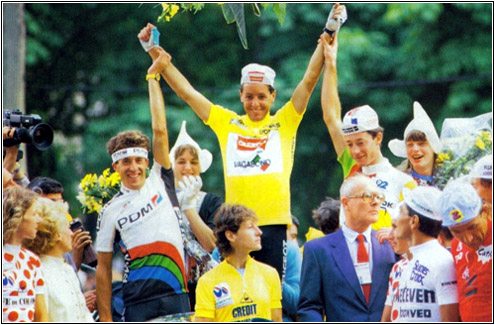
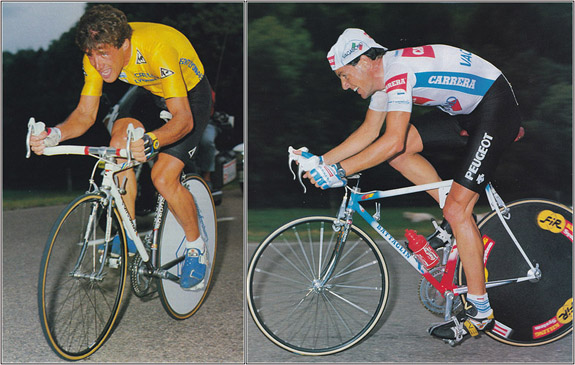
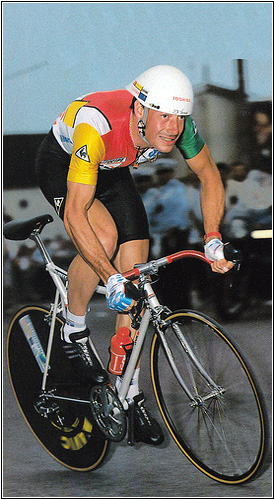
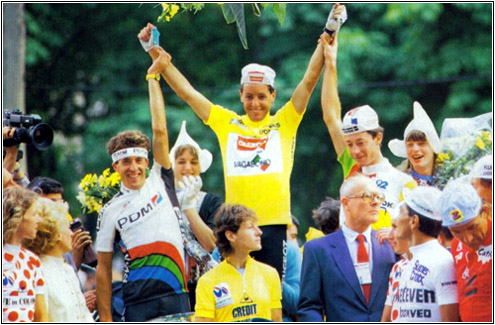

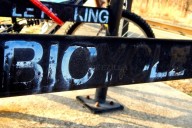
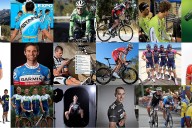
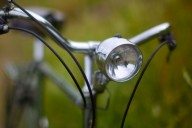


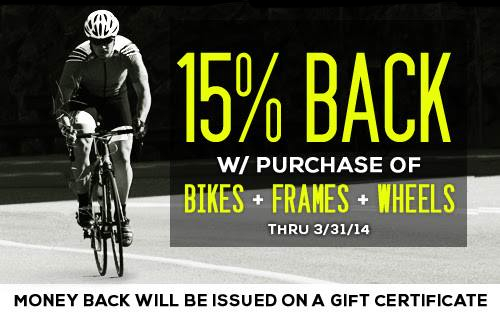

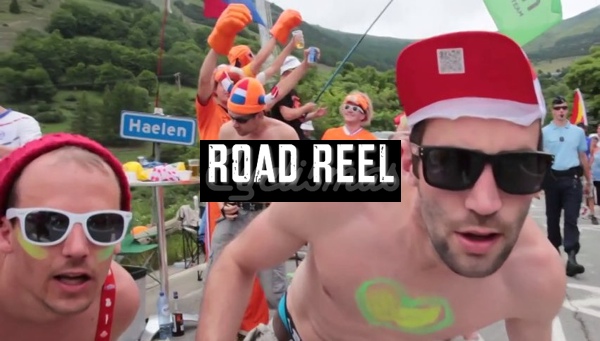
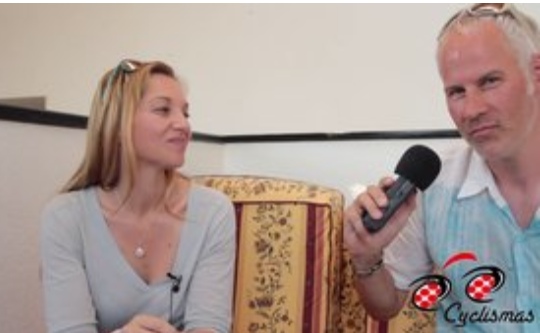

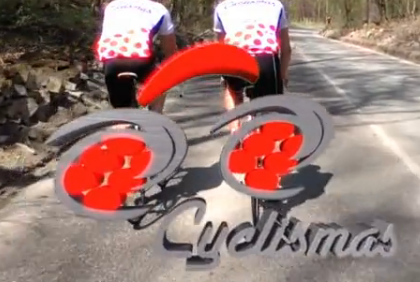

No Comments